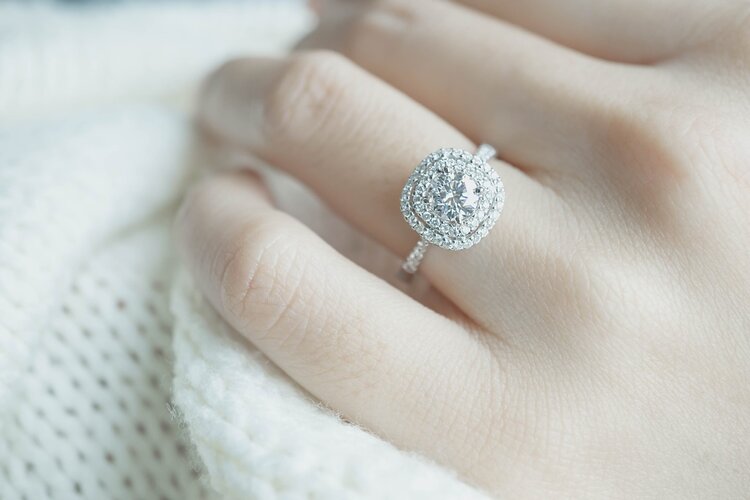
Everything You Need to Know About Their Differences
Diamonds are one of the most precious stones that are used in jewelry and are known to be a girl's best friend. They are one of the most beautiful, classy and luxurious pieces of jewelry and have been around for thousands of years. Nowadays, they are perfect for any occasion, be it a date or an important business meeting. The diamond market is currently dominated by natural mined diamonds, however, there is a new type of diamond that is growing in popularity: lab-grown diamonds.
While both lab-grown diamonds and natural diamonds have their own common features and properties, there are also some differences that set them apart from each other. The truth is that most people today don't know the difference between natural and lab created diamonds. This article will help you understand both types of diamonds better so that you can make an informed decision when buying a diamond.
Definition Of Lab Grown Diamonds and Natural Diamonds
In order to understand what a lab grown diamond is, let's first talk about how a natural diamond is made. Natural diamonds are formed by carbon atoms which are compressed under extreme heat and pressure inside the earth's crust. The carbon bonds together forming carbon atoms which form graphite (the softest mineral known to man). Then these carbon atoms begin to bond together forming graphite crystals which eventually form graphite octahedrons (eight sided crystals). These are small enough to be found by prospectors and miners who then take them out of the ground where they have been formed over millions of years. This process takes place anywhere from 100 miles below the earth's surface all the way down to 1,800 miles below the earth's surface depending on where they are being mined from. Natural diamonds also have imperfections or flaws that you'll never see in lab-grown diamonds.
Lab-grown diamonds are made in a lab under controlled conditions with the help of science and technology. They're grown in a chemical process called chemical vapor deposition (CVD) which uses high temperatures to create the desired crystal structure of diamond crystals. Lab-grown diamonds don't have any imperfections or flaws and they come in a variety of colors including blue, red, pink and green. The main difference between natural and lab-grown diamonds is that natural diamonds are mined from the earth whereas lab-grown ones are created by scientists using CVD technology.
Chemical Composition of Lab Grown Diamonds Compared to Natural Diamonds
Lab-grown diamonds have the same chemical composition as natural diamonds. Both are made up of pure carbon (C) with trace amounts of impurities such as boron (B), nitrogen (N), hydrogen (H), and sulfur (S). The only difference between them is their atomic structure. The atomic structure in natural diamonds has been known to be perfectly ordered, while the atomic structure in lab-grown diamonds is disordered. Disordered atoms do not have a regular arrangement, which makes them less efficient at conducting electricity or heat than ordered ones.
A diamond is made up of 90% carbon atoms arranged in a tetrahedral structure with nitrogen atoms occupying the spaces between them and making up 10% of its weight. Lab-grown diamonds are made of pure carbon. Natural diamonds, on the other hand, contain impurities like nitrogen and boron. These impurities affect the color and clarity of a real diamond. The carbon content in a lab-grown diamond is 99.9% while that in natural diamonds varies from 95%-98%. The higher carbon content makes for a harder and more durable material in both cases.
The appearances of Lab Grown Diamonds Compared to Natural Diamonds
The first thing that you need to understand is that both diamonds can look exactly alike to the naked eye. This is because they were created using similar processes with identical results. The only way to tell them apart is with a trained eye and special tools such as an ultraviolet light or microscope.
When carefully examined, natural diamonds have a unique texture and pattern called 'growth ring', which is caused by the formation process under high temperatures and pressures deep within the Earth's mantle. The growth rings in lab-grown diamonds are much less visible than those in natural ones because they're created under controlled conditions at low temperature and pressure by humans. The growth ring makes natural diamonds often described as having a "brilliant" or even "dazzling" appearance.
Most lab-grown diamonds are more translucent than naturally mined ones. They also tend to have more clarity than natural diamonds because they do not go through any processing after being mined from the earth such as cutting or polishing, which makes them look as clear as a piece of glass under a microscope. The color of lab-grown diamonds may also vary depending on what chemicals were used during their production process. If they were made with high pressure high temperature (HPHT) technology, they will typically have stronger colors compared to those made by other methods such as chemical vapor deposition (CVD) or plasma spraying (PS).
The Prices and Rarity of Lab Grown Diamonds Compared to Natural Diamonds
The price of both types of diamonds is determined by the same factors: rarity, size and quality. The natural diamond market has been dominated by small stones in recent years, while the lab-grown market has seen a rise in high-end luxury goods. Natural diamonds are rare and expensive to produce, which makes them very valuable. In fact, natural diamonds are the most expensive gemstone in the world.
Natural diamonds are rarer than lab-grown ones and therefore more expensive, as lab-grown diamonds are usually sold for a fraction of the cost of natural diamonds. The reason behind this high price difference is that unlike lab grown diamonds, natural diamonds are mined from deep underground. Natural diamonds are extremely rare, while it takes years to mine a single carat of diamond from an underground mine, it only takes months to grow one in a laboratory.
Consideration in Choosing Lab Grown Diamonds or Natural Diamonds
There are benefits to both lab-grown diamonds and natural diamonds. Neither of them are necessarily better than the other—it's simply a matter of personal preference. As mentioned before, the price gap between them is closing rapidly for the same quality, so if you're looking to save money, lab-grown diamonds have some great options. However, if you want something with a more unique appearance and value, natural diamonds may be your best bet.


